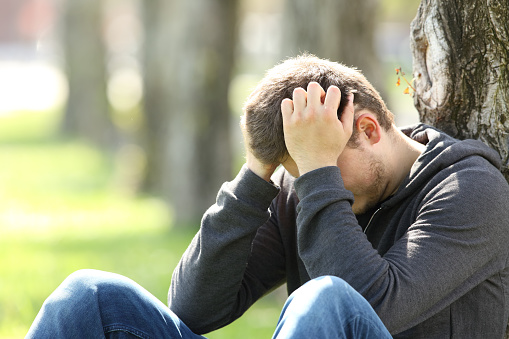
Every tragedy is different but preparation, strong school/community ties, and disciplined follow-up can help every situation.
• A tornado rips through a community, destroying one school and severely damaging another.
• Three students are killed in an automobile accident on the way home from prom.
• A gunman terrorizes a school, killing and wounding many students and staff.
• A teacher dies of an unexpected heart attack in front of her students.
• A student commits suicide in a high school parking lot.
Long-term recovery from crisis is not a single event but rather a journey that requires intentionality and, in many cases, more time than we might think. The more people affected, the more complex the process. Although schools generally operate with defined beginnings and endings — school years, budget cycles, grade levels, grading periods, class schedules, and the like — crisis recovery does not work that way.
As school psychologists with extensive school crisis experience, we have helped guide schools on how to respond to and recover from a myriad of traumatic events. As such, we are all too familiar with the devastating effects crises can have on schools, yet we have also seen schools help their communities cope and in doing so help students learn how to adaptively deal with tragic events.
At school, the ultimate goal of long-term recovery is to return to learning and instruction. However, doing that can take time, and the return to “normal” must be balanced with adequate time and support for healing. Our experience as practitioners has been reinforced through our work at the national level as volunteer leaders with the National Association of School Psychologists where we have consulted with school districts across the country in the aftermath of crises and developed best practices and training for school crisis prevention, preparedness, response, and recovery. We have a learned a number of important lessons about what recovery means for schools, and illustrate these lessons with two specific examples.
A school shooting at Thurston High School in Springfield, Ore., in 1998 was a life-changing event for the community, staff, and students. A freshman entered the school with a semiautomatic rifle and two handguns. He passed the perimeter fencing, surveillance cameras, and campus monitors, and sprayed 50 rounds of ammunition throughout the cafeteria. This single act of violence left two students dead and 25 other students seriously wounded. Cathy Kennedy-Paine was one of the first responders to the high school, and, as a school psychologist, helped lead planning and implementing the district’s response.
Our second example involves the suicide of a high school student in the Central High School parking lot. (Central High is a pseudonym used here to protect the identity of the student.) Sixteen classrooms of students and staff looked out their classroom windows to see a student on fire. Horrified and confused, office staff went running out of the building, and a teacher jumped out a window to run toward the student to help extinguish the fire. The student survived the initial incident though tragically died a few days later of his injuries. Many assumed it was an accident until a suicide note was found. School psychologist Melissa Reeves had just trained this district’s administrators, mental health workers, and crisis teams and was called to provide consultation.
From these experiences, we derive five lessons for long-term recovery after crises:
Lesson #1: Be prepared before a crisis happens.
Many crisis events can overwhelm the coping capacities of students and adults. The effectiveness of recovery depends on the quality of prior planning and preparation as well as the character and connectedness of the school climate. Certainly the nature of the event itself is relevant to the scope and scale of people’s needs. For instance, the death of a student or staff member will likely require targeted response efforts to support the closest friends and colleagues, while a mass school shooting can overwhelm the entire school-based response system. The school’s preparedness and culture shapes its capacity to begin and follow through with steps toward recovery.
The effectiveness of recovery depends on the quality of prior planning and preparation as well as the character and connectedness of the school climate.
The foundation of school crisis preparedness lies in prevention and wellness promotion programs that support student well-being as well as learning. Schools should focus on efforts that proactively facilitate resiliency, address students’ mental health challenges, promote positive behaviors, and encourage a sense of belonging at school. However, because we cannot prevent all crises from occurring, schools must have trained school safety, mental health, and crisis intervention teams to develop and implement a school crisis response plan. Also essential is establishing and maintaining partnerships with community-based safety and mental health professionals. Such healthy working relationships are critical in the event of a crisis.
At Thurston High, our initial reactions to the shooting were shock and disbelief. Nothing in our previous experiences with individual student deaths prepared us for the magnitude of this horrifying event. However, due to our planning, we were able to quickly put the existing district crisis plan into action with a team of administrators, school psychologists, and other school counselors. Having the plan, an organized team, and key roles and relationships in place reduced confusion and helped everyone feel a sense of hope, which in turn potentially minimized psychological trauma.
The student suicide at Central High brought a wide range of emotions — from shock to denial to disbelief to anger. Students and staff questioned whether they missed signs and wondered why the student chose to expose them to this horror. However, as a result of their training, the crisis team had defined roles and responsibilities that helped them implement the crisis plan. The school used the Incident Command System structure that facilitates communication with police and fire agencies and provides support to school staff. District staff members formed a multidisciplinary team and assumed the roles of incident commander, public information officer, security chief, outside agency liaison, and mental health coordinator. This team helped ensure that the short-term and long-term physical and psychological safety needs of students, staff, and families were met. In addition, because they all were trained in the same framework, school psychologists and counselors from other schools in the district came to help. The administration worked with and listened to the expertise of their mental health staff regarding what supports were needed; they were comfortable with district mental health staff supporting their students.
Lesson #2: The immediate response influences long-term recovery.
Although not a typical outcome, when students and staff exposed to a crisis are not adequately evaluated and supported, the resulting traumatic stress can have long-term negative effects on academic performance, behavior, and mental health. An essential initial recovery task is evaluating student risk for psychological traumatization. Even when students and staff members have very similar crisis experiences, individuals will respond differently. Consequently, ongoing evaluation of psychological trauma risk is critical.
Identifying the needs of individual students is important both to ensuring that they receive the proper support and that the school effectively deploys resources. Depending on circumstances, expecting that most students will recover from their trauma exposure is reasonable. Such normal recovery can be facilitated by naturally occurring social support resources such as parents, teachers, and friends. For students whose natural support systems are sufficient, providing more intensive unnecessary interventions not only diverts precious mental health resources — which often are stretched thin — but may inadvertently communicate that students are more traumatized than they actually are or that their natural support systems are inadequate.
Of course, some students may have long-term recovery needs beyond what most caregivers can provide. For a minority of students who develop severe challenges such as post-traumatic stress disorder, longer-term psychotherapy may be needed. Failing to provide appropriate professional mental health supports can perpetuate crisis symptoms that can undermine individual well-being and the learning environment. In some communities, the stigma that surrounds seeking mental health services can hinder recovery. If the school can provide mental health and counseling services on campus, students and staff members are more likely to take advantage of them. If that is not feasible, then schools should assist parents in seeking outside services.
In addition to identifying the needs of individual students, schools should take a number of steps within the first three days following a traumatic event. In both schools described here, immediately following the event the schools locked down the campus to prevent further traumatic exposure to the incident. Once the situation was stabilized and safety was assured, the schools were closed. Students contacted their parents, which helped calm the atmosphere at the school. The district disseminated voice-recorded messages from the principal and a letter to parents, informing them their child may have witnessed a traumatic event and that crisis responders were on campus to assist their child. They provided staff members with known facts about the event, information on the employee assistance program, and a description of the plan for the following days’ support activities.
After a few days, the schools reopened and counselors were available in classrooms and also provided additional individual and group grief support for more affected students. They helped students identify healthy coping strategies and created a database to track students and faculty members’ needs. They made parent resources available in person and on each school’s web site. The crisis team debriefed and evaluated the situation daily. These strategies all contributed to effective long-term recovery and the smooth return to normal school activities.
Lesson #3: Providing adequate, appropriate, and sustainable mental health supports requires a balance of school and community professionals.
Following larger crisis events, schools will find that they cannot address crisis independently. In such instances, having established relationships with trusted community providers is critical to supporting short- and long-term physical and psychological recovery needs. However, outside support is not a substitute for school-employed mental health staff members who know the students and staff best, are fully integrated in the school/learning context, and can provide ongoing continuity of services.
Schools must balance their need for additional help following significant crises with the advantages of using school-employed staff members. All too often, we have seen districts bring in outside providers in the immediate aftermath of a crisis who have no experience working in schools or with children and adolescents, and/or keep them only for limited time without a plan for transferring ongoing services to school staff.
Conversely, school leaders can be overwhelmed with outside offers to help, particularly after significant crises that generate a lot of media coverage. This can lead to confusion and, in some cases, reluctance to accept any outside supports, even when their expertise is truly needed. Administrators are most effective when they listen to their own mental health support staff about the type of help needed and the appropriate personnel to fill these roles.
In addition, the timing of a crisis matters. When a crisis that traumatizes a community occurs just before a school break, schools must ensure that there is a process for communicating with families and that students have access to a range of resources during school vacations. Community agencies can be critical to providing such services when school is not in session.
Schools must balance their need for additional help following significant crises with the advantages of using school-employed staff members.
The community’s response to the Thurston High tragedy was effective largely because of both the school’s preparation and its connectedness to the community. Community agencies such as the police, church groups, Red Cross, and county mental health workers all provided support. The district crisis team coordinated the help of over 200 counselors, setting up a screening system for outside mental health workers to ensure they had experience with schools. Additionally, in one of the first such partnerships with local law enforcement in the county, school resource officers began serving high school campuses.
A week after the Central High suicide, the crisis team determined that a select group of students and staff needed more intensive mental health support. Due to the intense nature of the event and the need for already exhausted school professionals to fulfill their typical duties, the school brought in trauma specialists from outside mental health agencies to lead more intensive individual and small-group counseling.
Symptoms of a child in crisis
Children having a difficult time coping may show any of these symptoms:
- Fear of separation from parents or clinging behavior;
- Eating or sleeping problems, nightmares, bedwetting;
- Headaches or stomachaches with no physical cause
- Prolonged sadness;
- Behavior problems at home or school;
- Startled reactions to loud noises, sirens;
- Acting younger than their age (regression);
- Fear that the tragedy will be repeated;
- Depression or panic;
- Withdrawal, decreased activity level; and
- Decline in academic performance with no apparent explanation.
Lesson #4: Be prepared to address a variety of reactions over the long-term.
As we began the school year following the Thurston tragedy, we saw a variety of reactions from students. Many were able to go through the school year without noticeable effects and without outside help. However, for some students their beliefs about the safety and security of school were altered and resulted in trauma-related behaviors. The students’ initial reaction to the trauma, their physical closeness to the event, their emotional closeness to victims, and their continued exposure to pictures or talk of the event influenced the severity of their trauma reactions.
At Thurston, most students and teachers said, “let’s get on with life, with school, with learning.” For some of the 300 students and staff who were in the cafeteria that day, however, returning to normal was not so simple. When students and staff returned to school, an empty chair or a friend who was no longer there could be traumatic reminders of the event. Some returning students still had the physical evidence of scars and carried bullets within them; some faced surgeries and lengthy rehabilitation; some could never return to the cafeteria, fearing recurring violence.
At Central High School, most students and staff returned to a typical routine with little to no long-term consequences. Only a few needed ongoing support, and those were students who had mental health issues before the event. The school returned to normal operations within a few weeks of the event. As usual, recovery was the norm. Three months after the event, a schoolwide emotional wellness survey was administered to students to assess the level of coping and to identify those who may need additional supports. The survey confirmed that while a small number of students continued to need ongoing mental health support most students were moving ahead without post-trauma symptoms.
Lesson #5: Seek to find a “new normal”; things may not be the same.
Returning to the structure of a school routine can provide a sense of predictability and control. While schools may need to make academic concessions in the short term (e.g. postponing exams), the day-to-day routine is a source of comfort. There is a delicate balance between making accommodations and sticking to routine when establishing a new normal. School mental health professionals can help strike this balance.
Our approach at Thurston to long-term recovery was twofold: to recapture the school’s normal activities while simultaneously supporting the 1,500 students and staff members in achieving a healthy recovery. The Thurston Assistance Center was established at the school to provide counseling support and information to students and families affected by the shooting. Grant funding enabled the school to add two counselors trained in trauma support. That continued for three years, until students who were freshmen at the time of the shooting had graduated.
One activity that supports recovery and movement to a new normal is establishing a memorial. Memorials can be temporary or permanent. Within hours of the shooting, community members of all ages placed flowers, posters, balloons, plants, teddy bears, candles, photos, poems, crosses, and other mementos on the chain link fence in front of Thurston High. In the weeks after the shooting, this became a place where community members gathered and expressed their grief and support for students and staff. In the week following the campus suicide, flowers were placed on this student’s parking space. They were removed after one week; the space was left unassigned for the remainder of the school year.
Ultimately, many communities choose to erect a permanent memorial commemorating a tragedy. We have experienced memorials that help a community heal and memorials that divide a community, especially when there are disputes over the memorial’s design. Schools should proactively develop guidelines on memorials that take into consideration the situation surrounding the death and integrate cultural sensitivity. Having guidelines before a crisis minimizes hard feelings that can develop if schools provide different types of memorials for different students. Living memorials such as donations to establish a scholarship fund or to begin implementation of a prevention program are often most appropriate — especially in the aftermath of suicide.
Five years after the Thurston High School shooting, the hard work of students, parents, community members, and school staff members culminated in the dedication of a permanent memorial at the school. The memorial is a quiet, peaceful park setting to the side of the high school. It is a reminder of the tragedy of lives altered forever, and it pays tribute to the unity and camaraderie between school and community. The installation of this memorial signaled the start of a new era — one in which community members remembered those lost but also sought ways to integrate the event into their lives and move forward.
In the case of a suicide, the guidelines for memorials are different than memorials recommended for other types of deaths. Acknowledging the death is important but equally so is not glorifying, highlighting, or accentuating the act of suicide. Glorification can lead to suicide contagion — a relatively rare phenomena wherein one suicide can lead other vulnerable individuals to also engage in suicidal behavior. Living memorials such as buying and using a school suicide prevention program following a suicide are the most appropriate and should be encouraged over permanent physical memorials.
On the one-year anniversary of the student suicide, the school had a moment of silence for everyone to think about all of those loved and lost, without mention of the specific incident. For additional guidelines on memorials, go to www.nasponline.org/resources/crisis_safety/memorials_general.aspx.
Conclusion
When addressing the long-term effects of crises and psychological trauma, schools must have systems in place that foster proactive rather than reactive response. Schools must not be passive. It is not a question of if, but when, a school will be required to respond to a crisis. Providing quality staff development for all educators in the same model or framework is critical. School crisis teams must be proactive in developing the infrastructure to address crises and support traumatized students. In the long-term, schools and communities experiencing a crisis must work together to realize recovery and their “new normal.”
CITATION: Kennedy-Paine, C., Reeves, M.A., & Brock, S.E. (2013). How schools heal after a tragedy. Phi Delta Kappan, 95 (4), 38-43.
ABOUT THE AUTHORS

Cathy Kennedy-Paine
CATHY KENNEDY-PAINE is a school psychologist in Oregon and chair of the National Emergency Assistance Team for the National Association of School Psychologists.

Melissa A. Reeves
MELISSA A. REEVES is a school psychologist at a PreK through 12th-grade school in North Carolina and a lecturer for Winthrop University, Rock Hill, S.C.

Stephen E. Brock
STEPHEN E. BROCK is a professor and psychology program coordinator at California State University, Sacramento.










